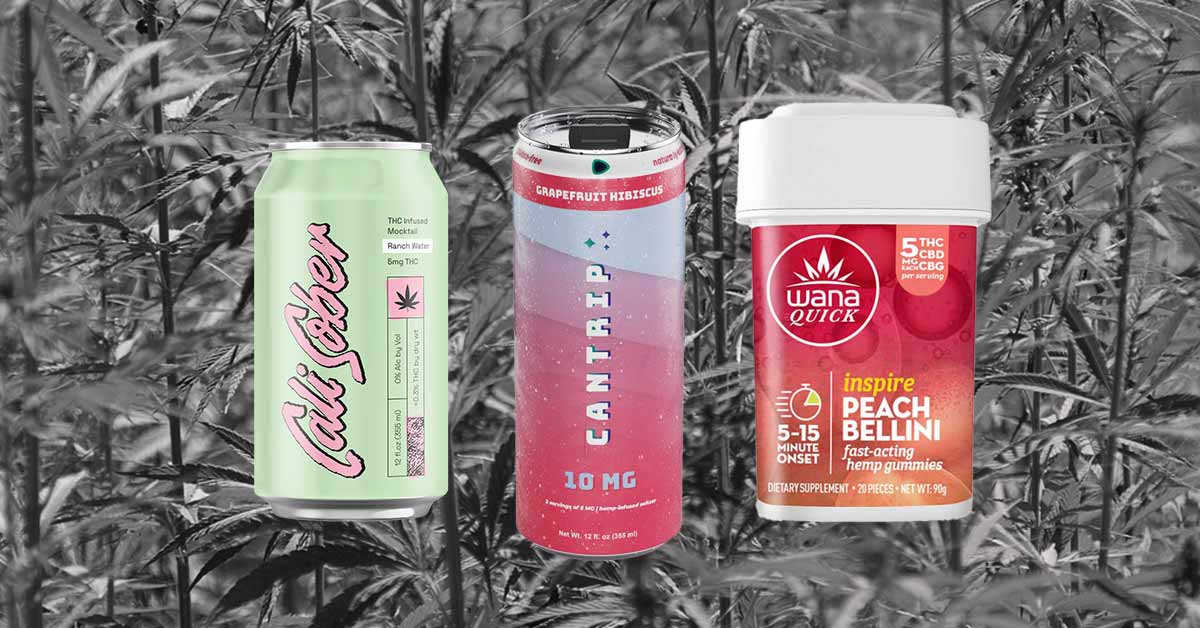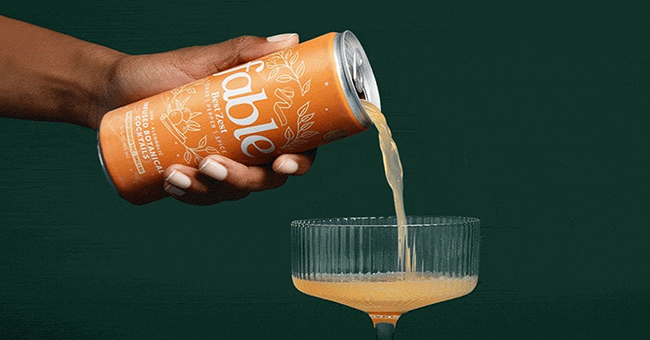California Governor Gavin Newsom’s proposed emergency regulations of “dangerous hemp products” issued Friday is the latest in a series of attempts by individual states across the country to corral in an industry that is growing faster than regulators can keep up with.
These actions stem from what many industry stakeholders see as ambiguity around hemp regulation by the federal government, leaving the bulk of the administrative burden to state governments. States are using dosage requirements, serving size restrictions and even banning specific cannabinoids as they juggle between public health concerns and the aim of creating a thriving business opportunity for a nascent adult-use category that could be a big source of tax revenue.
Regardless of action by specific states, the fallout from a state-by-state approach has led to uncertainty among cannabis businesses and stakeholders operating in the gray area opened by the 2018 Farm Bill.
“The hemp-derived marketplace is inherently a disruptor to the cannabis industry,” said Leili Fatehi, partner and principal at Minnesota-based consultancy firm Blunt Strategies and Apparatus GBC. “The reason that we’re seeing this state-by-state approach is because federally, our market and our policies governing cannabis have just become increasingly incoherent. It just doesn’t make sense anymore.”
In response to that incoherence, states across the country from Oregon to Iowa to New Hampshire, among others, have tried to use the legislative route to put guardrails on the hemp industry through labeling, dosage and serving size requirements. Some of these bills, like Mississippi’s House Bill 1676, have died in state legislatures.
Initially, Gov. Newsom tried this route with Assembly Bill 2223, proposed by majority leader Cecelia Aguiar-Curry, but the measure was killed in session when it was not called to vote. This led to the Friday announcement of an executive emergency action to ban any detectable quantity of THC from industrial hemp products meant for human consumption — which includes food, food additives, beverages and dietary supplements.
California’s approach is similar to Missouri Governor Michael Parson’s executive order which prohibited any food or beverage that contains “unregulated psychoactive cannabis.”
Cannabis advocates don’t like that approach.
Looking at Newson’s latest order, “I cannot reconcile the amount of negative economic impact with the assumed positive social and public health impacts,” said Beau Whitney, founder of cannabis industry economics firm Whitney Economics.
The total potential market (TAM) of California’s hemp-derived market is $3.65 billion and accounts for over 41,000 jobs, according to an analysis by Whitney’s firm. In a survey the firm conducted, 83.3% of respondents said they would either go out of business, move to another state and/or transition their business online.
“What you’ve got here is you’ve got a policy that will basically either shutter businesses and displace all these workers that are associated with the industry and capitulate $258 million in potential tax revenue to online sales. It will be completely lost,” Whitney said.
Not only that but it will increase unemployment. When Virginia enacted a similar restrictive law in July 2023, unemployment rose 0.1% as a result, Whitney said, “which is pretty significant.”
The industry will likely mount a challenge to Newsom’s action similar to appeals of President Biden’s executive order forgiving student loans, said industry lawyer Eric Postow, managing partner at Holon Law Partners.
“This is essentially the governor making his own rules when he could not get the political process to do what he may have wanted,” Postow said. “It’s bad politics; it’s bad policy.”
The challenge could be an administrative challenge or a target of the “emergency nature” of the rule which claims to be tamping down on unregulated products that are targeted to kids and/or are not approved by the Department of Health, Postow said. “It seems like they could have had a much more tailored approach to the real concerns they address, instead of doing what they did, which was to attack the entirety of the ecosystem.”
California is the largest economy in the country and one of the largest cannabis economies of the world, so the new regulation is opening up another line of conversation: ways that broader cannabis industry can encompass and benefit from both marijuana-based businesses in the dispensary channel and hemp-derived brands in an age-gated framework similar to alcohol or cigarettes.
For now, stakeholders in the regulated marijuana industry seem to be in conflict with those working from the hemp-derived side of cannabis.
“I don’t think Newsom’s emergency action is the right way of doing this, but I’m just glad that it’s starting some conversations that should have started a long time ago,” said Ricardo Baca, founder of cannabis industry PR agency Grasslands. “Hemp regulations need to be more consistent nationwide and we should be moving toward legal cannabis because hemp has shown us that this can happen and it can happen responsibly.”
Determining what the “overall chain reaction, or butterfly effect” of Newsom’s decision will be on the cannabis industry as a whole is hard to determine, Baca said, but it does highlight the deep divide between regulated adult-use operators and hemp brands. Cannabis companies operating in the dispensary channel are subject to more regulatory scrutiny of product testing, chain of custody and taxation than hemp. Additionally, these businesses do not operate under Section 280E of the Internal Revenue Service which allows tax write-offs for business purposes, but not for businesses that traffic in a Schedule I drug, as marijuana is still classified.
Industrial hemp businesses are not subject to these restrictions because they operate in an environment that is more-or-less unregulated federally.
But it’s not all conflict. Despite the various restrictions on hemp-derived cannabinoids playing out in individual states, there are marijuana brands who have operated in the regulated adult-use channel that have embraced hemp-derived THC as it offers cost savings in production and the opportunity to send edibles and beverages throughout the country via ecommerce and DTC channels.
In June, Curaleaf launched TheHempCompany.com to sell hemp brands online. Wana Brands followed suit late last month with its own online marketplace Wanderous. Marijuana edible makers Wyld and Kiva Confections have both dipped a toe into the category, making hemp-derived THC versions of some of their popular products available online.
Beverage brand Fable reformulated its marijuana-derived THC drink to incorporate hemp-derived cannabinoids because it saw more opportunity for a beverage outside of the dispensary channel.
The decision to pivot out of dispensaries was based on the regulated market’s business model that values high-dose flower and vapes in a “buy cheap and sell strong” framework, said Fable CEO and co-founder Ben Kennedy.
“If you have to build a horizontal supply chain in every state that you want to operate, all that goes out the window. So the regulated market doesn’t work largely for beverages,” he said
But with the patchwork quilt of law and regulations, the growth of hemp-based brands is also state-by-state. Based on counsel from the brand’s lawyers about two months ago, Fable decided to keep its hemp-derived THC products out of the California market. It has focused its distribution and marketing on states like Tennessee and Louisiana, where there are “very decisive rules and regulations” for hemp-derived products.
What is surprising to most category watchers is that more states have not taken the approach of Minnesota, which has seen a lot of upside in embracing hemp-derived THC; especially in beverages.
Since the North Star State ushered in the relative gold rush of intoxicating hemp products in 2022, it has put in place a number of restrictions to encourage business growth while maintaining a public health framework.
“We put a cap on the amount of THC products could contain. We put in place packaging testing and different kinds of advertising and labeling requirements,” said Fatehi.
Minnesota has banned cannabinoids like Delta-8 and Delta-10 with public safety in mind and is taking a bifurcated approach so both sides of the cannabis industry can operate safely and effectively, Fatehi said.
Throughout the state, low-dose, hemp-derived THC beverages have offered a lifeline to craft breweries that have seen revenues decline in recent years. The state’s recreational adult-use law went into effect last August.
“If we’re doing this the right way, like we’re trying to do here in Minnesota, the hemp-derived market will help lower the stigma around all of cannabis, so that we can move all of it to a more reasonable framework of regulation,” she said. “We’re not regulating this stuff like plutonium when it isn’t, but we’re also treating it like an adult-use product.”

